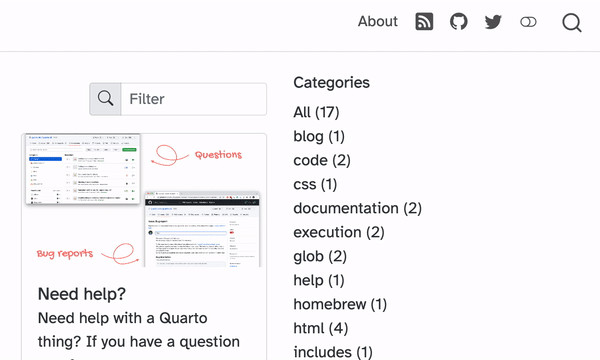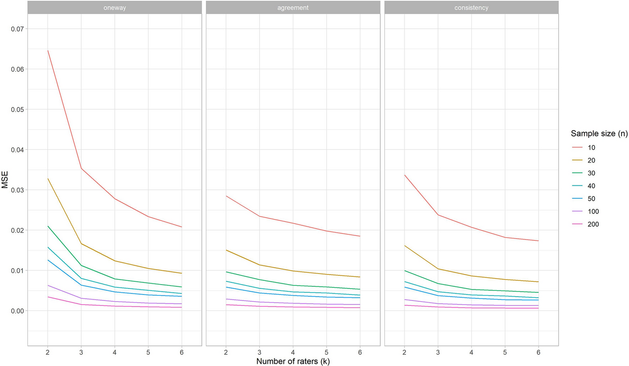PSA for #Rstats from the R NEWS RSS stream: Let's all cite the new DOI for the R manuals.
#rstats
@djnavarro I expect everyone reading this (except for me a few minutes ago) knows this, but if you do this sort of thing:
```
---
format:
html:
theme:
light: litera
dark: darkly
---
```
you get a button at the top of the document that enables the reader to select between the two modes. Source: https://mine-cetinkaya-rundel.github.io/quarto-tip-a-day/posts/17-dark-mode/. #rstats

Parallel processing FTW #RStats
Step 1: Write R code
Step 2: Share it
Step 3: Spend 2 hours helping someone install R and troubleshoot their environment
OR
Step 1: Write R code
Step 2: webR sharelink
Step 3: Profit
Update to this situation. For some reason, I didn't read my Rmd document all the way through (there is a lot of stuff, I was interested in parts of it, and restarting it), and it turns out that I saved the whole dang set of objects to an #RStats RData file!
So at least I have all the objects using in the analysis!
Will see how much that actually helps tomorrow.
#RStats {patchwork} is the bees knees
A team from the Mind, Brain and Behavior Research Center (CIMCYC, cimcyc.bsky.social) published a #programming guide aimed at students in #psychology and #cognitive #neuroscience. This evolving set of #tutorials offers a curated collection of conceptual reflections, practical examples, and methodological recommendations. The material is available in #Python, #RStats, and #MATLAB.
https://wobc.github.io/programming_book/
#CognitiveScience #OpenScience
Absolutely thrilled our open-source demand model won the Florence Nightingale Award!
Proud to be part of a brilliant, kind, and thoughtful team at The Strategy Unit who value #opensource, probabilistic thinking & delivering public value.
Explore the code: https://github.com/The-Strategy-Unit/nhp_model
Happy to chat if you want to know more
New R package: forestdata makes it easy to download forestry and land cover data from multiple sources (Copernicus, ESRI, EU-Trees4F, and more). Supports sf, SpatRaster, and tidy outputs.
Explore it here: https://cidree.github.io/forestdata/
"510 years of professional experience in data science" how can I lie on that one 
"I am Defuneste of the Clan #Rstats I was born in 1518 in the village of Glenfinnan since them I wrangled data. And I am immortal."
#Statistics #RStats #AcademicChatter people, what is a nice, citable (statistical) simulation study that you like? For example, comparing methods or data analysis approaches.
(self-promotion definitely allowed)
Finally had a good enough reason to set up an R-Universe for official work #RStats packages. It's so nice to use behind the scenes and makes it so much easier for users that aren't familiar with Git and other devtools to just install binaries. @jeroenooms, thank you for your hard work on this.
Well crap. A project from over 5 years ago, when I wasn't doing things well, and I've not got package versions recorded, and was doing all of the analysis via a `knitr` script, with very few intermediates saved.
And now collabs have reviewer comments, and want to change some outputs.
The package is under a git repo, but figuring out how far back to go is a pain in the butt.
So glad using `renv` now at least gives me a record of what versions I had at the time of analysis. #RStats
burnt echoes in #rstats
Useful paper investigating the precision of various #reliability and #MeasurementError parameters under different conditions and study designs:
https://link.springer.com/article/10.1007/s10742-022-00293-9
It comes with an #RStats shiny tool to explore some of these oneself:
https://iriseekhout.shinyapps.io/ICCpower/

How good is Mitchell O'Hara-Wild's {vitae} package for #RStats, https://mitchelloharawild.com/blog/vitae/? I managed to add a whole new section to my CV (https://codeberg.org/adamhsparks/AHSparks_CV) without screwing up formatting of the final document this morning. Thanks, Mitchell!
After a longer than intended break, episode 207 of the @rstats @rweekly Highlights podcast is out! https://serve.podhome.fm/episodepage/r-weekly-highlights/207
Generating Quarto syntax within R @djnavarro
Introduction to Behavior-Driven Development (Jakub Soboleqski)
Dive()ing into the hunt @milesmcbain
Plus one of your hosts could not resist a hot take or two!
h/t @mike_thomas & @R_by_Ryo

f you use ggplot2, you will find patchwork package amazing https://patchwork.data-imaginist.com/ #rstats
I track @stratosphere's posts & their bot has a daily top 10 sketch IPs list. My kept
lots of "*.100" IPs & I was curious how frequently they showed up.
Went back 200 posts w/GH:McKael/madonctl using both R and DuckDB.
Def block these.
— #DuckDB: https://ray.so/SdMcBZa
— #RStats: https://ray.so/naTBBMS


